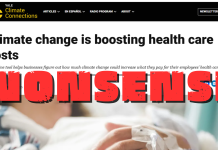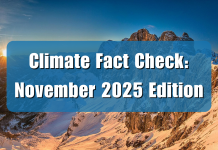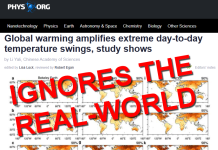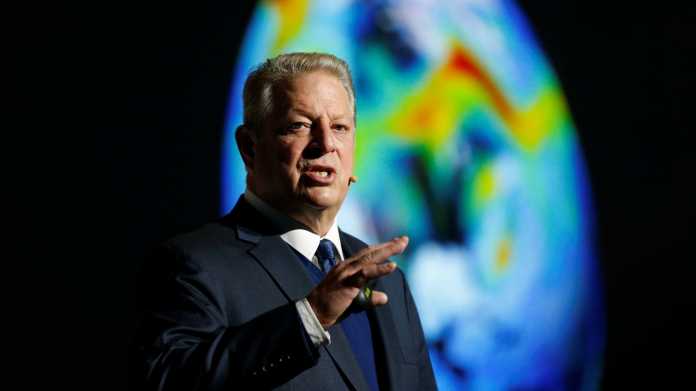Editor’s note: Steve Milloy breaks down the falsehoods cited by Al Gore during his 2007 Nobel lecture. Now that some time has passed, Gore’s predictions can be checked against the real data available. For more like this, Climate Realism has covered Gore’s deceptive and oftentimes totally false claims in the past, here.
Guest post by Steve Milloy
At the opening of COP-27, Al Gore said:
“We have a credibility problem all of us: We’re talking and we’re starting to act, but we’re not doing enough.”
Gore got the first part right — the entire climate alarmist movement has a credibility problem as previously shown here and here. Gore himself has contributed much to this credibility problem over the years beginning with his infamously deceitful movie An Inconvenient Truth (2006). The film was so error-filled that a British judge required in October 2007 that it carry warning labels before being shown to school children.
Despite the court ruling, the Nobel Peace Prize committee awarded Gore and the United Nations’ Intergovernmental Panel on Climate Change (IPCC) its 2007 award. Gore accepted his Nobel Peace Prize in December 2007 and delivered his “Nobel Lecture” in which he made a number of apocalyptic claims. Now, 15 years later, as the climate alarmist community meets in Egypt at COP-27, its an appropriate time to examine Gore’s apocalyptic views mentioned in his Nobel Lecture with reality to date.
Present Temperature
Gore statement:
“The earth has a fever. And the fever is rising.”
2022 Reality:
Per the World Meteorological Organization, the average global temperature in 2020 was 58.8°F vs. a fever which is a body temperature in excess of 98.6°F or so. So no “fever.”
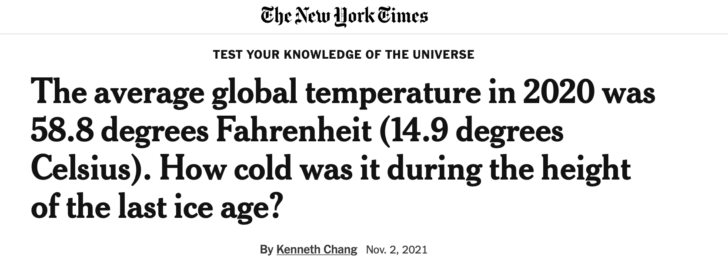
Future Temperature
Gore Statement:
“Svante Arrhenius calculated that the Earth’s average temperature would increase by many degrees if we doubled the amount of [carbon dioxide] in the atmosphere.”
2022 Reality:
We’re only about 50 percent of the way toward doubling the amount of carbon dioxide (CO2) in the atmosphere, but let’s consider where we are and what the future may hold.
At the present level of CO2 — i.e., 50 percent of the way to doubling the pre-industrial level — the United Nations Intergovernmental Panel on Climate Change (IPCC) estimates that we have experienced about 1.1°C of global warming since 1850-1900. A doubling of CO2 from the pre-industrial level would then by simple extrapolation indicate a future average temperature of 2.2°C.
The New York Times reports that by 2100, when the amount of carbon dioxide in the atmosphere will more than double the pre-industrial level of CO2, the alarmist-projected amount of global warming is estimated to be 2.1°C to 2.9°C greater than the pre-industrial temperature.
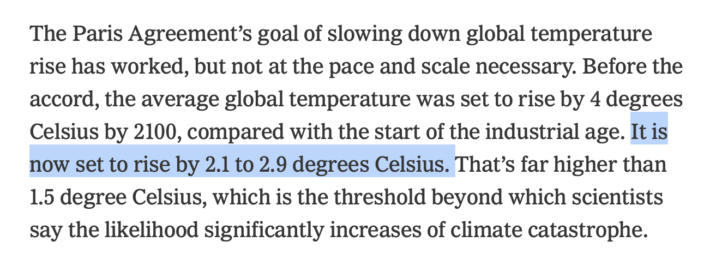
While these estimated temperatures are certainly “degrees” above the pre-industrial average temperature, they are certainly not “many degrees” above it.
Global temperature as its relates to atmospheric CO2 is a controversial topic and merits discussion beyond the scope of this effort, but suffice it to say that even IPCC calculations contradict Gore’s claim of “many degrees” of warming from a doubling of atmospheric CO2.
2. Polar Ice Cap
Gore Statement:
“Last September 21, as the Northern Hemisphere tilted away from the sun, scientists reported with unprecedented distress that the North Polar ice cap is ‘falling off a cliff.’ One study estimated that it could be completely gone during summer in less than 22 years. Another new study, to be presented by U.S. Navy researchers later this week, warns it could happen in as little as 7 years. Seven years from now.”
2022 Reality:
The Arctic ice cap has never “fallen off a cliff,” not in 2014 or as predicted or now in 2022. Per data from the Intergovernmental European Organization for the Exploitation of Meteorological Satellites (EUMETSAT), the Arctic hit an annual summertime low of about 4 million square kilometers of ice in 2012. In 2022, the annual summertime minimum had increased by about 25% to over 5 million square kilometers of sea ice. Not only is 5 million square kilometers of sea ice far different from ice-free, as Gore predicted, the annual minimum Arctic sea ice isn’t trending toward ice-free by 2030 either.

…
Read the rest at JunkScience.com, here.


